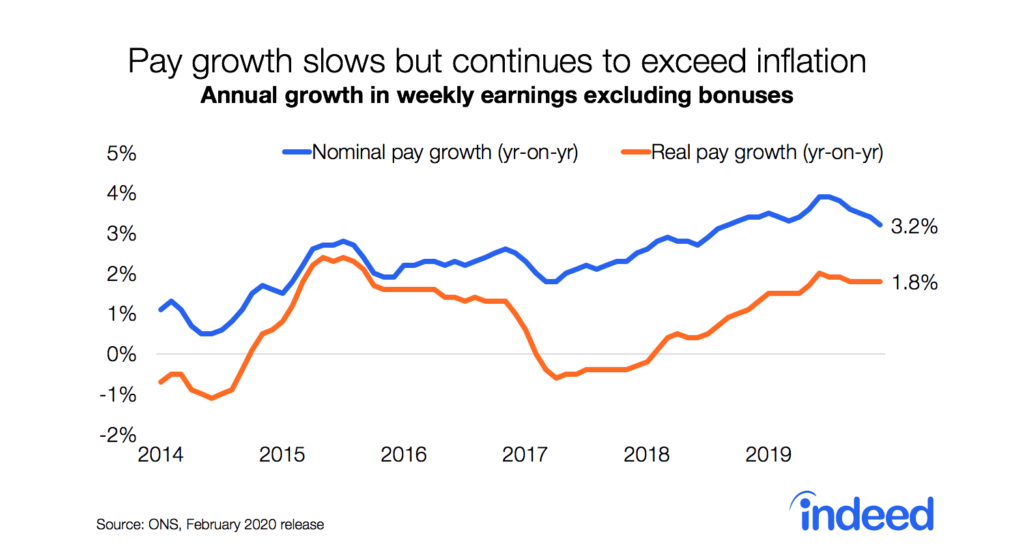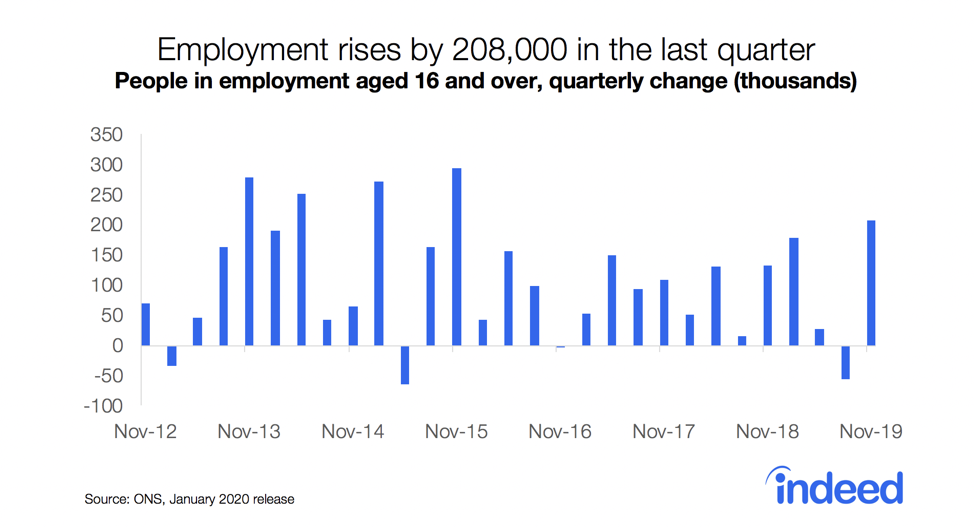We regularly update this report to track the pandemic’s effects on the labour market.
UK job postings on Indeed continue to rise. Job postings — a real-time measure of labour market activity — were 38.8% above the 1 February 2020, pre-pandemic baseline, seasonally adjusted, as of 5 November 2021. Strong demand for staff shows no sign of easing, suggesting that tight labour market conditions will persist in the wake of furlough’s closure.
A comparison of job posting trends across high, mid and low-paid categories (based on median advertised wages) shows the extent to which growth has been driven by the recovery of lower-paid sectors this year. Job postings for the low-paid tercile are now 66% above the pre-pandemic baseline, compared with 39% for mid-paid and 28% for high-paid.
Construction growth
Construction saw the strongest improvement in the latest fortnight, followed by chemical engineering. Loading & stocking and retail saw further improvements, with postings in both categories standing at more than double pre-pandemic levels.
Sports, insurance, scientific research & development and legal saw the biggest deterioration.
North East continues to lead regionally
The North East continues to show the strongest recovery among regions, with job postings 72% above the pre-pandemic level. London has slipped back to the bottom of the regional rankings at 25%.
Northern cities and large towns continue to have strongest recoveries
Sunderland has seen the strongest recovery among cities and large towns, followed by Barnsley and Middlesbrough.
As we discussed in a previous post, posting recovery has been fastest in cities with higher shares of manufacturing, distribution, healthcare and education jobs, while areas reliant on hospitality, tourism and highly paid, white-collar, work-from-home jobs trail.
All cities and large towns we track have now passed the pre-pandemic baseline, with Aberdeen and Crawley having climbed into positive territory.
We host the underlying job-postings chart data on Github as downloadable CSV files. Typically, it will be updated with the latest data one day after this blog post was published.
Methodology
All figures in this blog post are the percentage change in seasonally-adjusted job postings since 1 February, 2020, using a seven-day trailing average. 1 February, 2020, is our pre-pandemic baseline. We seasonally adjust each series based on historical patterns in 2017, 2018, and 2019. Each series, including the national trend, occupational sectors, and sub-national geographies, is seasonally adjusted separately. We adopted this new methodology in January 2021.
The number of job postings on Indeed.com, whether related to paid or unpaid job solicitations, is not indicative of potential revenue or earnings of Indeed, which comprises a significant percentage of the HR Technology segment of its parent company, Recruit Holdings Co., Ltd. Job posting numbers are provided for information purposes only and should not be viewed as an indicator of performance of Indeed or Recruit. Please refer to the Recruit Holdings investor relations website and regulatory filings in Japan for more detailed information on revenue generation by Recruit’s HR Technology segment.
*We looked at the relationship between job postings, clicks and wages in sectors experiencing the greatest hiring difficulties in a previous post.






